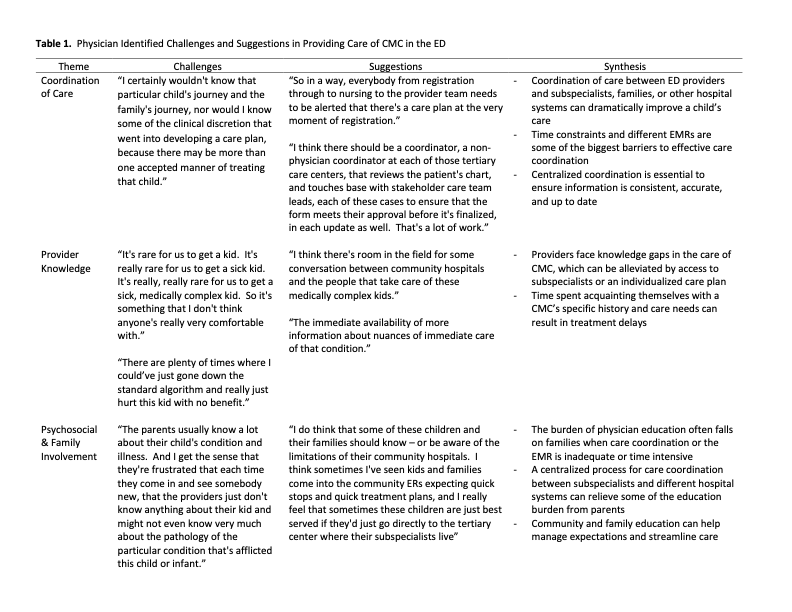Emergency Medicine: All Areas
Emergency Medicine 8
383 - Evaluating General Emergency Medicine Physician Perspectives on the Implementation of an Emergency Care Planning Tool for Children with Medical Complexity
Publication Number: 383.212

Christian D. Pulcini, MD, MEd, MPH (he/him/his)
Assistant Professor of Emergency Medicine and Pediatrics
University of Vermont
Burlington, Vermont, United States
Presenting Author(s)
Background:
Children with medical complexity (CMC) have increased health service and emergency department (ED) utilization, with previous studies describing ED visits as challenging for patients, families, and pediatric emergency medicine (PEM) physicians. Tools like Emergency Information Forms (EIFs) aim to address these challenges, but no studies to our knowledge have evaluated general ED physicians’ perspectives on emergency care for CMC despite 80% of CMC presenting to general EDs (as opposed to freestanding children's hospitals).
Objective: Our objective was to assess general ED physicians’ perspectives on emergency care of CMC and the content, format, and potential challenges in uptake of an emergency care planning tool (such as EIFs) for CMC.
Design/Methods: A trained study team performed in-person or virtual semi-structured interviews of general ED physicians from 05/2022-09/2022. An interview guide was developed a priori. All interviews were digitally recorded and transcribed by a professional transcription service. Two independent coders conducted thematic analysis with monitoring of inter-rater reliability through NVIVO software.
Results:
Fifteen physicians were interviewed to reach thematic saturation. Years in unsupervised practice of physicians ranged from 0 (trainee) to more than 15. Of those interviewed, 73% reported caring for 1-5 CMC per month, and 67% had pediatric subspecialists at their primary practice site. Thematic analysis revealed common themes in emergency care of CMC including: coordination of care, variable resource and subspecialist availability, provider knowledge about rare or complex medical conditions, psychosocial factors, and the role of electronic medical records. Providers noted challenges and suggestions for improvement within these themes. All participants supported the development and implementation of an emergency care planning tool such as an EIF. ED physicians preferred electronic EIFs over paper-based, with multiple participants recommending a combination. Only one participant reported the current use of EIFs for CMC at their primary practice site.
Conclusion(s):
Caring for CMC in the ED is challenging for families, patients, and ED providers. Implementation of clinical support tools such as EIFs with key stakeholder input have potential to mitigate these challenges. General ED physicians in our study provided common themes supporting the development and implementation of an optimized emergency care planning tool for CMC, along with implementable interventions to improve quality of emergency care for CMC. 
